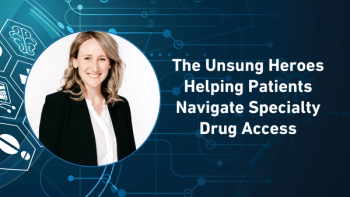
- Pharmaceutical Commerce - February 2024
- Volume 19
- Issue 1
A Pharma Pricing and Agreements Primer in Today's Complex Landscape
In order to provide both profitability and medication access, a balancing act is required.
In the pharmaceutical sector, pricing models are complex, involving multiple stakeholders, such as healthcare providers (HCPs), insurers, and government agencies. In addition, some may feel that contracts in this space are difficult to understand because they address multiple issues such as variable pricing structures, volume discounts, and rebate agreements. To add even more factors, there are research and development (R&D) costs, production expenses, regulatory requirements, and market competition to consider. In the end, both pricing and contracts require a balancing act to navigate between profitability and providing access to essential medications.
Key stakeholders
In order to understand the complexities of pharma pricing, it is important to be aware of the key stakeholders involved, along with the roles they play:
- Manufacturers: Responsible for setting the drug’s list price when it is introduced into the marketplace.
Wholesalers: Transport drugs from manufacturers to pharmacies, ensuring a steady supply.
Insurance companies: Manage drug benefits.
Pharmacy benefit managers (PBMs): Serve as the intermediary between pharmacies, plan sponsors,manufacturers, and drug wholesalers, working to reduce drug costs for their clients by securing rebates.
Government: Create and implement regulations that impact drug pricing and reimbursement payouts.
Pharmacies: Responsible for dispensation of drugs to retail customers.
Patients: The actual consumers of drugs.
Understanding drug pricing
In 2022, the Rand Corporation reported that US residents sometimes pay double, triple, or more for prescription drugs than 32 other countries.1 Drug pricing changes dramatically as the product moves through the supply chain. To further complicate the issue, some figures aren’t prices at all, but rather calculated values that are submitted to various government entities; these represent a weighted average of pricing a manufacturer receives for the drug. Drug manufacturers can apply a number of different pricing mechanisms based on their corporate objectives, the competition, and the marketplace. Some of the common strategies include:
- Value-based pricing: Based on what the market perceives the value of a drug to be and is typically the best strategy for pharmaceuticals.
Cost-plus pricing: Determined by manufacturing, R&D, regulatory processing, overhead, and profit figures.
Competitive pricing: Driven by what competitors offer and how much discount a pharma manufacturer can afford to provide.
Reference pricing: Based on benchmarking a drug with a similar product in the market.
Penetration pricing: By offering prices lower than the competition, manufacturers gain market share and/or ensure a drug reaches a larger population more quickly.
Skimming pricing: Manufacturers charge a high amount for an in-demand drug but then lower it over time.
Dynamic pricing: Initial prices are based on current trends and whether the drug or vaccine has a seasonal impact. Prices are adjusted to ensure that the manufacturer and stakeholders remain profitable.
Discounted rebate pricing: Drugs are promoted by offering rebates.
Resale pricing: Prices are based on the purchase price between cross-company entities and then resold to third parties. The drugs are then marked up or down accordingly to account for the cost of purchase of the product, in order to arrive at a transfer price between those cross-company entities.
Pricing factors
In addition to the numerous stakeholders involved and their influences on pricing, there are some key factors that impact the price setting of pharmaceutical drugs, including:
- R&D costs: The rigorous process of research, clinical trials, and regulatory approvals are incredibly time-consuming and costly.
Market competition: If a drug enjoys market monopoly due to a patent, the manufacturers can set a high price due to its exclusivity. On the other hand, generic drugs, which do not have patents, can help lower prices.
Insurability and reimbursement: Insurance coverage or the lack thereof, along with negotiated discounts from drug manufacturers, impacts drug prices and ultimately out-of-pocket expenses for patients.
Government regulations: The work required to satisfy the regulatory requirements of US government agencies, including the FDA, ensures the quality and safety of drugs but also impacts the costs involved.
International price mismatch: This process is called “international price referencing,” in which the cost of drugs in the US is compared to that in other countries. To offset the disparity of lower costs in non-US markets, some drug companies may raise prices stateside.
The future of drug access and affordability
These complicated pricing models are directly linked to a number of disruptors, forcing manufacturers to rethink healthcare technology. According to a report by PwC, pharma companies embracing the future are investing $1 billion or more to enhance their digital capabilities.2 Increased adoption of emerging technologies such as edge computing, artificial intelligence (AI), and machine learning (ML) are game changers for the industry. Edge computing improves end-to-end data analysis across the entire pharmaceutical supply chain, helping to reduce waste, improve accuracy, and enhance operational efficiency, thereby passing the cost benefit on to the patient. AI and ML technologies enable faster, more accurate, and more accessible drug discovery, development, clinical trials, and marketing processes.
When it comes to R&D, quantum computing tools can run multiple permutations and combinations of algorithms rather than having to reproduce models in a lab.3 This shortens the R&D phase of drug manufacturing, bringing pharmaceuticals to market faster and potentially reducing prices.
The digitization of healthcare technologies is impacting the life sciences industry across all levels of business operations, allowing manufacturers to leverage high volumes of data to support end-to-end business objectives from R&D to patient engagement. By accessing and analyzing data points at each stage of the process, organizations achieve full visibility of the drug throughout the entire supply chain. Additional benefits include improved decision-making capabilities, enhanced efficiency, greater flexibility, and increased product quality and control.
These advantages allow the industry to progress beyond a traditional cost-plus pricing model to an innovative and dynamic pricing model based on a drug’s performance in the marketplace. This patient-centric—rather than one-size-fits-all—approach balances the needs of the patient with the goals of the industry.
It’s crucial for the US to find a way to achieve sustainable pricing models and simplify contracts. For sustainable pricing models to become a reality, the industry will need to embrace innovative payer-provider collaboration, adopt a positive approach to market competitiveness, focus on patient-centric outcomes, and further evolve the role of the pharmacist from the dispenser to an HCP. By leveraging end-to-end data visibility throughout the entire pharmaceutical supply chain, the industry can undertake a tangential shift to a patient-based approach that will ultimately benefit all stakeholders in the healthcare ecosystem.
References
1. Mulcahy, A.; Whaley, C.; Gizaw, M.; Schwam, D.; Edenfield, N.; Becerra-Ornelas, A.U. International Prescription Drug Price Comparisons: Current Empirical Estimates and Comparisons with Previous Studies. RAND Corporation. 2021.
2. Next in Health Services 2024: Healthcare’s Big Squeeze and the Way Out. PwC. 2024.
3. Bhardwaj, R. How Can Quantum Computing Technology Help In Pharmaceutical R&D? Roots Analysis. September 5, 2023.
About the Author
Abhishek Sinha is a business and integration architecture manager at Accenture.
Articles in this issue
over 1 year ago
Pharmaceutical Commerce - February 2024 Issue (PDF)over 1 year ago
The Value of 3PLsover 1 year ago
New Year, New Aspirationsover 1 year ago
Access Insights and Information Aboundover 1 year ago
A Look at the Medicare 'Extra Help' Programover 1 year ago
Who Moved My Prescription? Part IIover 1 year ago
The Path for Prescription Drug Salesover 1 year ago
The Impact of 340B on Commercial Contractsover 1 year ago
DSCSA 2024 or 2023 Déjà Vu?Newsletter
Stay ahead in the life sciences industry with Pharmaceutical Commerce, the latest news, trends, and strategies in drug distribution, commercialization, and market access.





